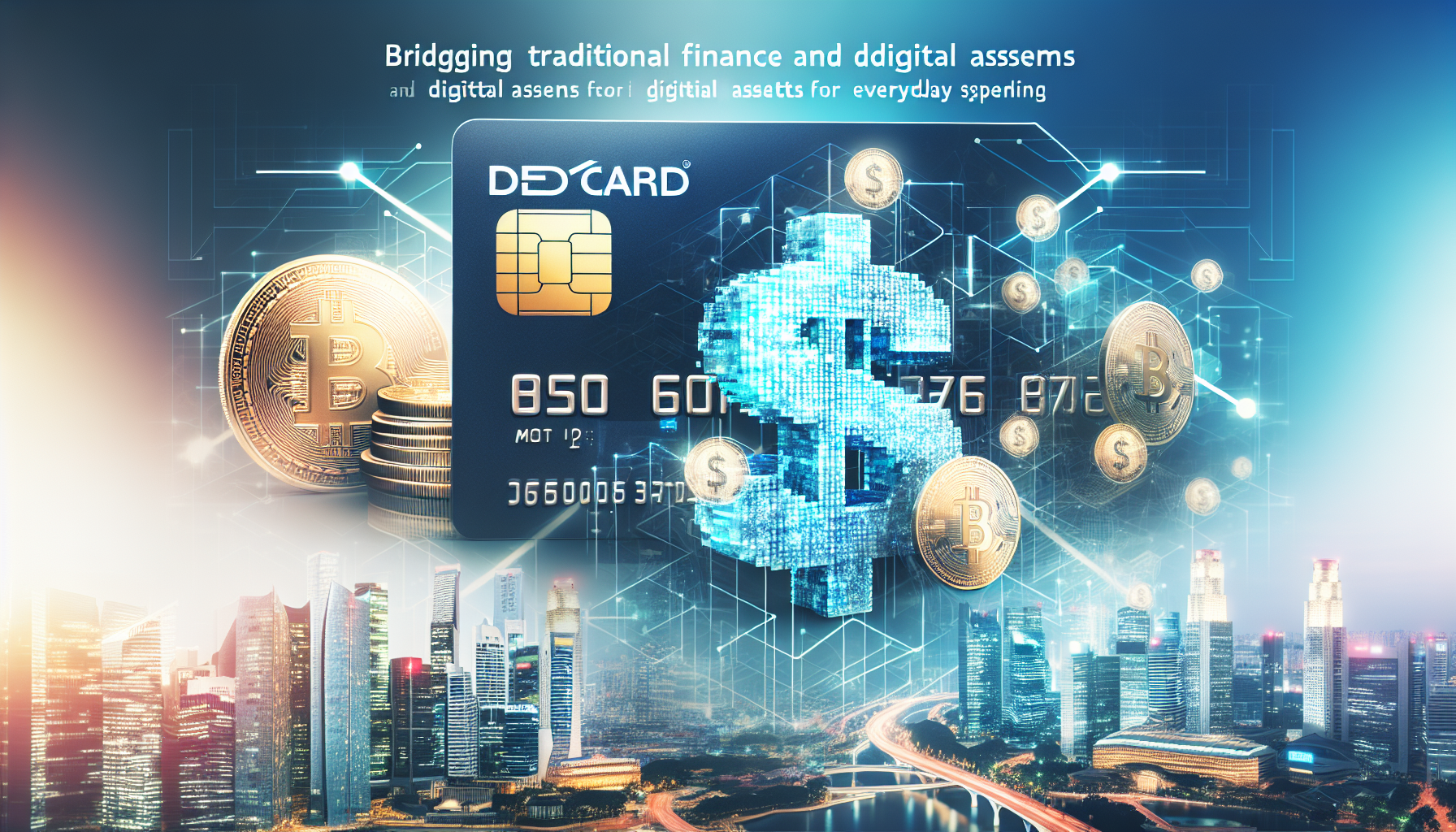The Great Convergence: How Standard Chartered's DeCard Blurs the Lines Between Crypto and Cash
A seismic shift is quietly unfolding in the heart of Singapore's financial district. In a move that signals a pivotal moment for the digital asset ecosystem, Standard Chartered, a global banking titan with deep roots in Asia, has announced a strategic partnership with DCS Card Centre to launch DeCard. This isn't just another crypto card; it's a meticulously engineered bridge designed to seamlessly connect the volatile, often isolated world of cryptocurrencies with the stable, universally accepted realm of traditional finance. By enabling direct stablecoin spending, this collaboration promises to redefine what it means to "spend" your digital assets, moving beyond speculative trading into the mainstream of everyday commerce.
Beyond the Hype: DeCard's Blueprint for Mainstream Crypto Adoption
The core innovation of DeCard lies in its elegant solution to crypto's most significant barrier to everyday use: volatility and complexity. While many have tried to create crypto payment cards, they often involve convoluted, real-time conversion processes that can be slow and expose users to price swings between the transaction initiation and settlement. DeCard tackles this head-on by focusing exclusively on stablecoins—digital currencies pegged to the value of stable assets like the US dollar or Singapore dollar.

This strategic focus means that a user loading their DeCard with USDC or a similar regulated stablecoin can walk into a merchant and make a purchase with the same confidence as using a traditional credit card. The merchant receives fiat currency, completely insulated from the crypto world's fluctuations, while the user spends directly from their digital asset wallet. This "invisible" integration is the holy grail of crypto payments, and Standard Chartered's backing provides a level of institutional trust previously absent from such ventures.
The Banking Engine: Standard Chartered's Critical Role
Standard Chartered is not merely a sponsor; it is the operational backbone of the entire DeCard system. As the principal banking partner, the bank will provide sophisticated virtual account services and API connectivity. In practical terms, this means that when a DeCard transaction occurs, DCS can instantly identify the user and reconcile the payment through Standard Chartered's robust banking infrastructure.
This technical integration is crucial for achieving the speed and transparency promised by the partnership. It eliminates the delays typically associated with moving value between blockchains and bank accounts, creating a user experience that is indistinguishable from, and potentially even faster than, conventional card payments. Dhiraj Bajaj, Global Head of TB FI Sales at Standard Chartered, encapsulated this vision, stating, "Our investments... allow us to be the trusted banking partner bridging TradFi to DeFi." This statement is a powerful acknowledgment from a legacy bank that the future of finance is not about replacement, but about integration.
A Legacy of Trust Meets Web3 Innovation: The DCS Card Centre Advantage
The choice of DCS Card Centre as a partner is a masterstroke in blending credibility with innovation. DCS is not a fledgling startup; it is the evolution of Diners Club Singapore, an entity with over 50 years of heritage in the card-issuing business. This lineage brings an unparalleled understanding of payment networks, regulatory compliance, security protocols, and merchant acquisition.

By powering DeCard, DCS effectively layers decades of payment industry expertise with cutting-edge Web3 technology. This combination directly addresses two critical concerns for potential users: security and widespread acceptance. A card backed by a company with a half-century track record in payments is far more likely to gain trust from both consumers and regulators than a product from an unknown crypto-native firm. It signals that DeCard is built to the exacting standards of the traditional financial world, ready for mass-market deployment.
The Singapore Sandbox: A Regulatory Green Light for Digital Asset Innovation
The decision to launch first in Singapore is no accident. The city-state has meticulously positioned itself as a global hub for financial technology, with its regulatory bodies, particularly the Monetary Authority of Singapore (MAS), actively encouraging responsible experimentation. Singapore's clear and progressive regulatory framework for digital payment tokens (DPTs) and stablecoins provides the certainty that institutions like Standard Chartered require to make substantial investments.
This launch serves as a large-scale pilot in a controlled, forward-thinking environment. Success in Singapore's mature financial market will provide a powerful proof-of-concept, creating a replicable model for expansion into other major markets across Asia and beyond. It demonstrates a regulatory pathway that other nations will undoubtedly watch closely.
The Ripple Effect: Stablecoins and the Multi-Trillion Dollar Future
The DeCard initiative is a single manifestation of a much larger trend identified by major financial institutions. A recent report from BNY Mellon projected that stablecoins and tokenized cash could reach a staggering $3.6 trillion by 2030, driven overwhelmingly by institutional adoption. This forecast underscores a fundamental belief: blockchains will not obliterate the existing financial system but will instead integrate with it, creating a more efficient, transparent, and interconnected global economy.
Projects like DeCard are the on-ramps for this future. They normalize the use of blockchain-based assets for mundane, real-world transactions, moving them from the periphery of finance to its center. As these use cases proliferate, the liquidity, utility, and stability of the entire digital asset market are enhanced, creating a positive feedback loop that accelerates institutional involvement.
Conclusion: Market Implications for the Coming Weeks
The announcement from Standard Chartered and DCS is more than a corporate press release; it is a bellwether for the digital asset market. In the immediate term, over the next several weeks, we can expect to see several key developments. Firstly, this will likely catalyze a wave of similar announcements from other major banks and financial service providers, who will be under pressure to demonstrate their own digital asset integration strategies to avoid being left behind. The race to bridge TradFi and DeFi has officially entered a new, accelerated phase.
Secondly, increased legitimacy for stablecoins as a payment mechanism could lead to a short-term boost in their market capitalization and trading volume, as both retail and institutional players position themselves to participate in this growing ecosystem. Furthermore, the focus on regulated, institutionally-backed stablecoins may draw liquidity away from more speculative and unregulated alternatives, reinforcing a flight to quality within the stablecoin sub-sector.
Finally, for the broader crypto market, this serves as a powerful bullish signal. It demonstrates that despite short-term price volatility, the underlying technology and asset class continue to attract serious, long-term investment from the world's most established financial institutions. This validation can provide a foundation of confidence that supports market stability and encourages further innovation, solidifying the narrative that digital assets are an enduring and transformative component of the future global financial infrastructure.

